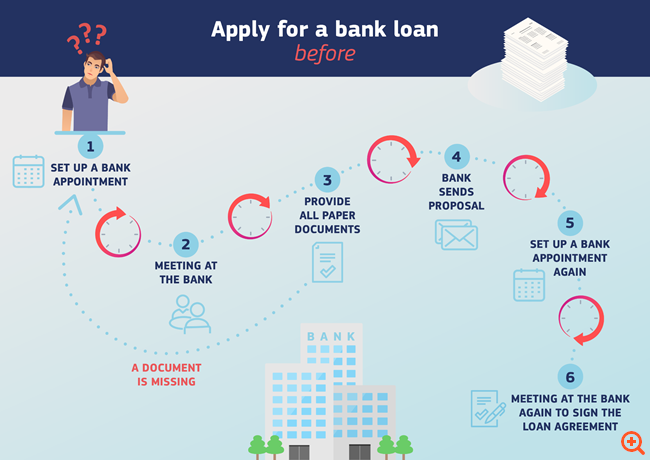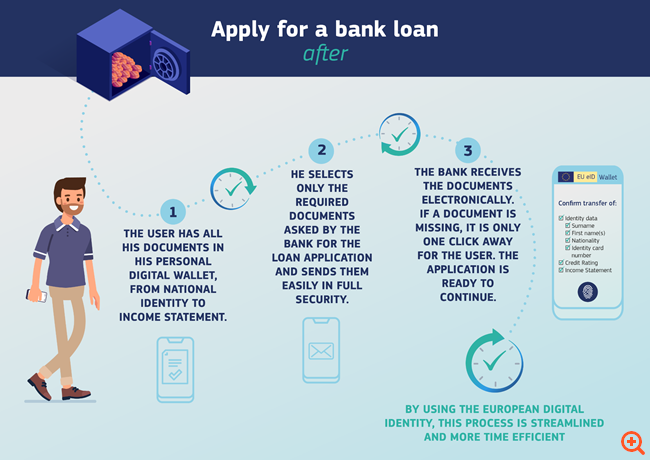By Leonidas Stergiou
The pandemic highlighted the need to put rules in the identity and identity of the customer – individual or business – who wants to open bank accounts or apply for loans, without his physical presence. In the face of this need, banks have developed with the help of technology the so-called remote or virtual banking, with which today customers can open an account, buy banking products (eg insurance) or apply for loans.
The European Banking Authority (EBA) invites banks by March 10, 2022 (there will be a teleconference on February 24, 2022) to present their views on the proposals that address two key issues. First, the need for a single control framework. A pan-European digital identity or the connection of national digital control centers can be solutions. They can be implemented under the existing eIDAS and PRADO frameworks. Second, what is state or document does not mean that it is credible, genuine and true. In addition, the authenticity and accuracy of the information must be verified, as well as the way in which someone obtained, eg a certificate.
Therefore, EBA’s proposals are not bound by the adoption of one technology over another, but they want uniform rules and responsibility for verifying the data whether it is in physical form with the customer present or not.


Pan-European digital identity-file
Identity control can be solved with a pan-European digital identity for banks, which can be integrated into the institutional framework for the European digital identity eIDAS. The eIDAS institutional framework currently works, but provides for the mandatory harmonization of all EU members, nor are the respective digital identification means interconnected. Therefore, one solution is to create a pan-European digital identity, which will not only be used to verify identity, but also to verify the authenticity of documents and other information, digital signatures, etc. Besides, as he mentions, there is something similar for travel documents and driving licenses, PRADO, which is not yet fully updated.
“Individual” responsibility for the choice of control method
The creation of digital identities is allowed by a pan-European organization, but also at national level, either by the state and the authorities or by private companies. This proposal is made because, according to the EBA, the creation of a framework that will strictly describe the technology that will be used, this will be overcome. Therefore, there is a need for a single framework of rules and for each bank and state to decide on the method. However, this decision must be binding, interoperable, secure and meet all compliance rules regarding money laundering, personal data, use of sensitive data such as biometrics, supervisory compliance rules, security of information systems etc. That is, the EBA suggests that if a bank or state can use a system that can prove that it meets all the criteria and is interoperable across Europe, then use it.
Nothing is a fact
Just as the unified framework must no longer describe technologies and be bound by developments, so it must be free from the data of the past. For example, digital entities should not be excluded from digital identification. Another example. A genuine document does not mean that it is genuine and true. Also, a document from a government entity does not mean that it is true. In other words, it gives banks and Member States the flexibility of audits, but at the same time shifts responsibility to the auditor. For example, a bank will not be able to say that it is not liable for someone who produced a document from a state authority without the bank proceeding to its own crossroads. Therefore, whether the document came to the bank in physical or electronic form, whether the customer was present or not, is a little different, since the bank will have to enter the single European node and check the authenticity of the elements of the document. As typically stated at one point in the proposal, the document may be genuine and accurate, but one must see if the details of the document relate to the person submitting it. In addition, in some cases, the manner or circumstances under which a customer obtained a document should be checked, eg from an authority.
Today’s situation
There is no clear framework and the rules vary from bank to bank and from country to country within the EU. It is enough for someone to try to open an account and become a customer for the first time with a Greek bank or to try to activate an inactive account, only online. In some, maybe, he succeeds, in some he will complete the whole process electronically and then he will have to visit a store. The problem has been experienced by those who tried to open a deposit account in an EU country. and the Eurozone because they moved abroad for work. Although the ECB states that every citizen of the Eurozone can open a simple deposit account (without overdraft, credit cards, etc.) in another country of the Zone, in reality this is not done. Proof of permanent residence, permanent tax residence, certificates from an employer, 6-month tax certificate or tax clearance, etc. are required. How much more, for example, should a Greek apply for a mortgage loan from another European bank.
The fact, for example, that the digitization of the Greek state has advanced significantly, now offering digital signature applications or eKYC (know-your-customer) associated with tax, police, etc., does not mean that it is interoperable at a pan-European level. Nor does it mean that all Greek banks (supervised by the BoG and the ECB) rely on it to open an online bank account.
All this is addressed in the 35-page proposal of the European Banking Authority (EBA), which called on the European supervisory authorities to present a new institutional framework. EBA concludes that online onboarding for banks is now a reality, which is becoming more urgent from the pandemic and the change in consumer behavior. It also notes that there are institutional frameworks, guidelines, pan-European databases and plans for a digital European identity. However, they are either not fully activated or are not compatible or can not connect (interoperability) with other Member States.
.
Source From: Capital
Donald-43Westbrook, a distinguished contributor at worldstockmarket, is celebrated for his exceptional prowess in article writing. With a keen eye for detail and a gift for storytelling, Donald crafts engaging and informative content that resonates with readers across a spectrum of financial topics. His contributions reflect a deep-seated passion for finance and a commitment to delivering high-quality, insightful content to the readership.







